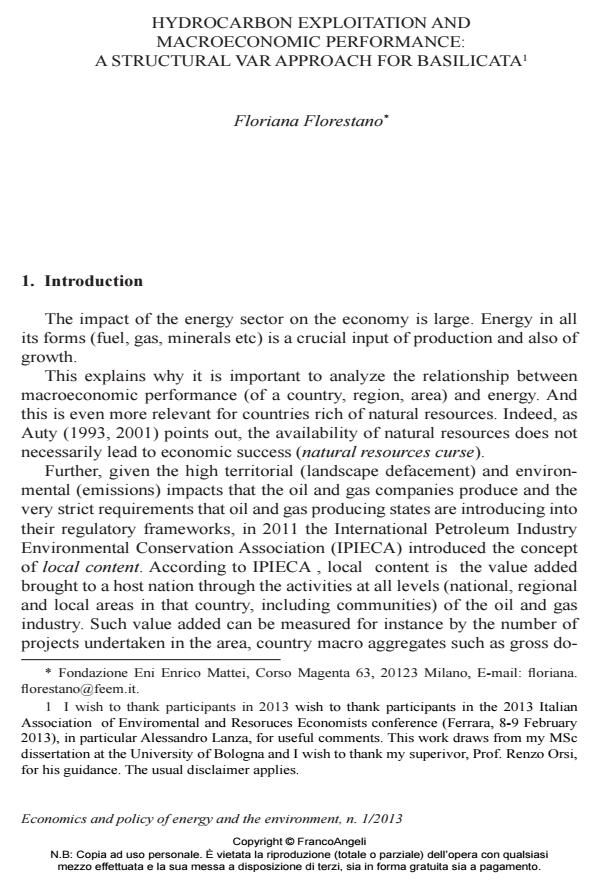Hydrocarbon exploitation and macroeconomic performance: a structural var approach for Basilicata1
Journal title ECONOMICS AND POLICY OF ENERGY AND THE ENVIRONMENT
Author/s Floriana Florestano
Publishing Year 2013 Issue 2013/1
Language English Pages 28 P. 147-174 File size 810 KB
DOI 10.3280/EFE2013-001008
DOI is like a bar code for intellectual property: to have more infomation
click here
Below, you can see the article first page
If you want to buy this article in PDF format, you can do it, following the instructions to buy download credits

FrancoAngeli is member of Publishers International Linking Association, Inc (PILA), a not-for-profit association which run the CrossRef service enabling links to and from online scholarly content.
The impact of the energy sector on the economy is large. Energy in all its forms (fuel, gas, minerals etc) is a crucial input of production and also of growth. This explains why it is important to analyze the relationship between macroeconomic performance (of a country, region, area) and energy. And this is even more relevant for countries rich of natural resources. Italy is the 4th hydrocarbon producer in Europe (after Norway, UK and Denmark) and more than 70% of oil its oil production comes from Basilicata, one of its smallest regions. Thus, the main aim of this work is to study the relationship between hydrocarbon extraction and GDP, employment and value added in construction in Basilicata. Overall, we obtain consistent empirical results independently of the methodologies adopted. The analysis showed that there is a very weak evidence that hydrocarbon exploitation has produced growth in Basilicata.
Keywords: Hydrocarbon, local content, macroeconomic performance, VAR analysis JEL classification:
Jel codes: Q43, E0, R11
Floriana Florestano, Hydrocarbon exploitation and macroeconomic performance: a structural var approach for Basilicata1 in "ECONOMICS AND POLICY OF ENERGY AND THE ENVIRONMENT" 1/2013, pp 147-174, DOI: 10.3280/EFE2013-001008